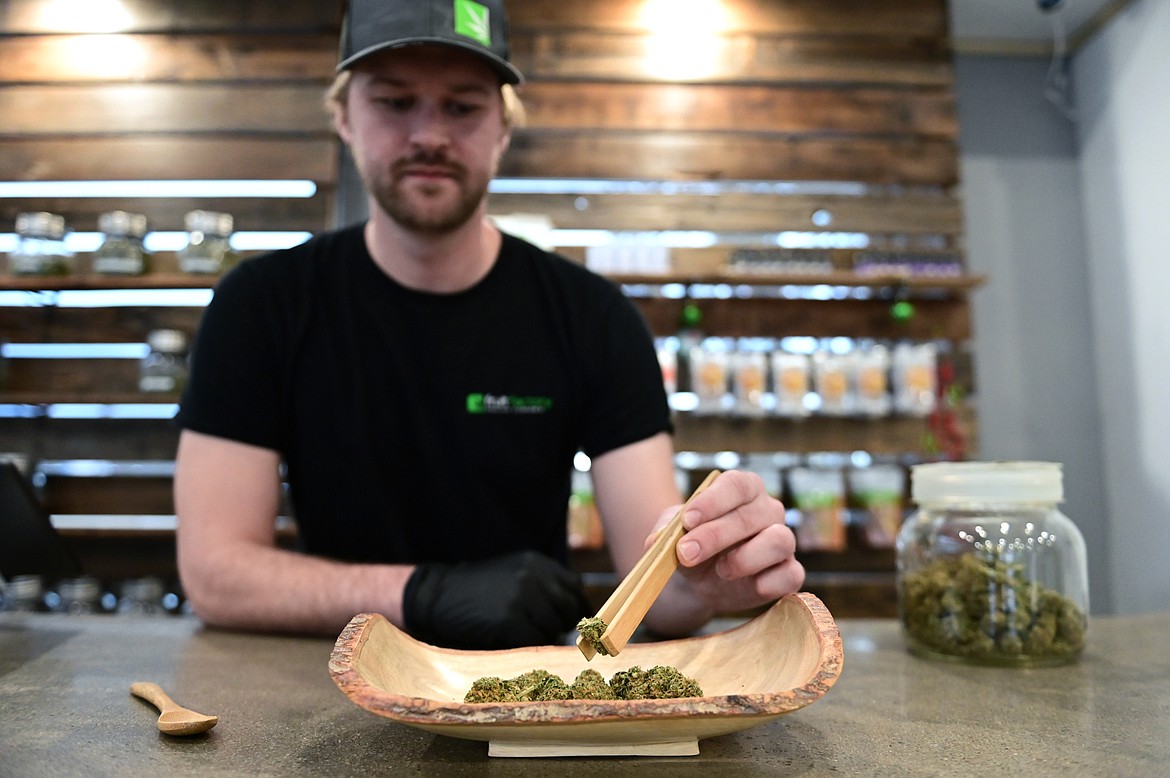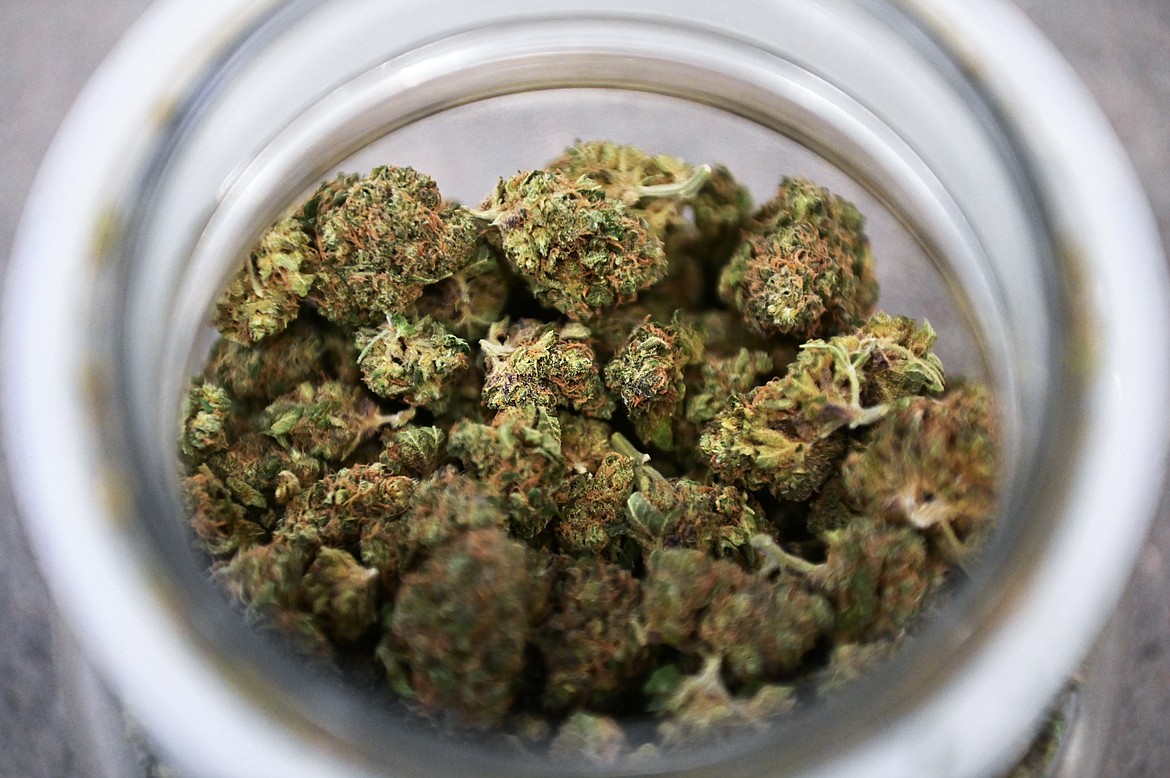Dispensaries ramp up for legalized pot
BRET ANNE SERBIN | Hagadone News Network | UPDATED 3 years, 12 months AGO
A new law going into effect Jan. 1 will be blazing a new trail for Montana cannabis dispensaries.
House Bill 701 takes effect at the start of the new year, legalizing adult-use recreational marijuana sales in the Big Sky state. The measure resulted from a successful ballot initiative during the 2020 general election.
In Flathead County, the new law will give marijuana-related businesses the freedom to operate just like any other business, according to County Commissioner Randy Brodehl.
Likewise, in Whitefish, marijuana businesses will be allowed in all business and industrial zones, as long as they’re 500 feet away from churches, synagogues, or public schools. Businesses selling cannabis must also observe a 150-foot buffer from each other to avoid clustering.
Kalispell is taking a more restrictive approach. A contentious debate in the City Council led to marijuana businesses being limited to the city’s industrial zones. City council members discussed allowing marijuana businesses in all of the city’s business and industrial zones before an amendment by Mayor Mark Johnson relegated the cultivation, manufacture and sale of marijuana to the city’s industrial zones.
A 300-foot buffer is also required between marijuana businesses and schools, parks, churches and residential zones in Kalispell.
THE NEW change has many local dispensary owners looking forward to the new year. Any dispensary with a current medical marijuana license that is in good standing will automatically receive a recreational marijuana license.
“We at Tamarack are really excited about it,” said Erin Bolster, owner of Tamarack Cannabis.
“We expect a busy day,” she said.
Bolster is basing her expectations on the long lines that appeared in other states when they legalized marijuana, like Colorado and Washington. Bolster said she’s in touch with a Seattle dispensary that confronted five-hour waits when recreational marijuana was first legalized there.
Plus, she said her dispensary has already received a lot of calls from locals and tourists alike who are interested in getting their hands on marijuana products as soon as the shops open their doors. Canadians, in particular, seem excited about the new legislation going into effect.
“They participate at a really high rate in their own legal market,” Bolster observed.
It’s possible, however, local dispensaries might not see such an influx. Bolster said she also knows a Colorado dispensary owner in a rural ski town who didn’t experience an unusually busy day following legalization there. She figured the Flathead might fall somewhere in between a usual day and interminable waits.
“I don’t think anybody knows how busy it’s going to be,” Bolster said. “We’re certainly prepared for being very busy.”
In fact, Bolster says demand could create shortages statewide in the next month. She warned medical marijuana customers to stock up on their products early if they have the ability.
Tamarack hired on more staff for the occasion, including a few more “budtenders,” and Bolster said it’s possible the dispensary will add more workers once they see the demand. The dispensary started ramping up its production in 2020 when the ballot initiative first emerged, since it takes time to cultivate extra inventory.
THAT’S A dilemma that’s facing other area dispensaries, too. With the uncertainty of the exact demand, growers like Paulson Palmer at The Fruit Factory have struggled to figure out an adequate amount of production leading up to Jan. 1.
“Dispensaries are asking: ‘Do I have the ability to step up? Am I going to be able to produce enough flower?’” Palmer said.
With three Flathead Valley locations, Fruit Factory faces that question to an even greater degree than most.
He’s basing his predictions on a 2020 University of Montana study that estimated dispensaries could see their sales double or triple if marijuana were legalized.
“We’re all ramping up our operations, or at least most of us are, as fast as we can,” Palmer said.
One change that Palmer believes will help his business will be expanded freedom on the distribution side of the market.
Prior to 2022, dispensaries have been required to operate 100% vertically — that means all of their cultivation and production has to take place within the same company that sells the products.
No longer will that requirement be in place once recreational marijuana goes legal.
Palmer is involved with the Montana Cannabis Industry Association, an organization that designed a website to serve as a marketplace for the emerging relationships between growers and sellers.
“That completely changes the market,” said Kate Cholewa, the Government Affairs Director for the MTCIA.
She anticipated these changes will create a bump for most of the industry at first, but after that, there’s likely to be consolidation. All of the current players in the marijuana market might not be able to weather the upcoming changes, she said.
“It’s an oversaturated market,” she said.
But who makes the cut, like many of the details of marijuana legalization, remains to be seen.
Palmer and Cholewa both stressed many of the rules around legalized marijuana are still “in flux.” Packaging, labeling and testing are all fine points of the new legislation that haven’t been finalized yet.
“I think there’s a lot of open ends right now,” said Palmer.
Reporter Bret Anne Serbin may be reached at 406-758-4459 or [email protected].
ARTICLES BY BRET ANNE SERBIN

Applied Materials moving into former Shopko store
Applied Materials is on track to start operating in its new Evergreen building this month, according to Ricky Gradwohl, Applied Materials' senior director of communications.

Affordable housing up for planning board approval
A senior affordable housing complex will come before the Kalispell Planning Board for approval Tuesday.

City to revisit recreational amenity requirement for developers
Kalispell City Council will revisit the city’s requirements for multi-family dwellings at a work session Monday evening.





